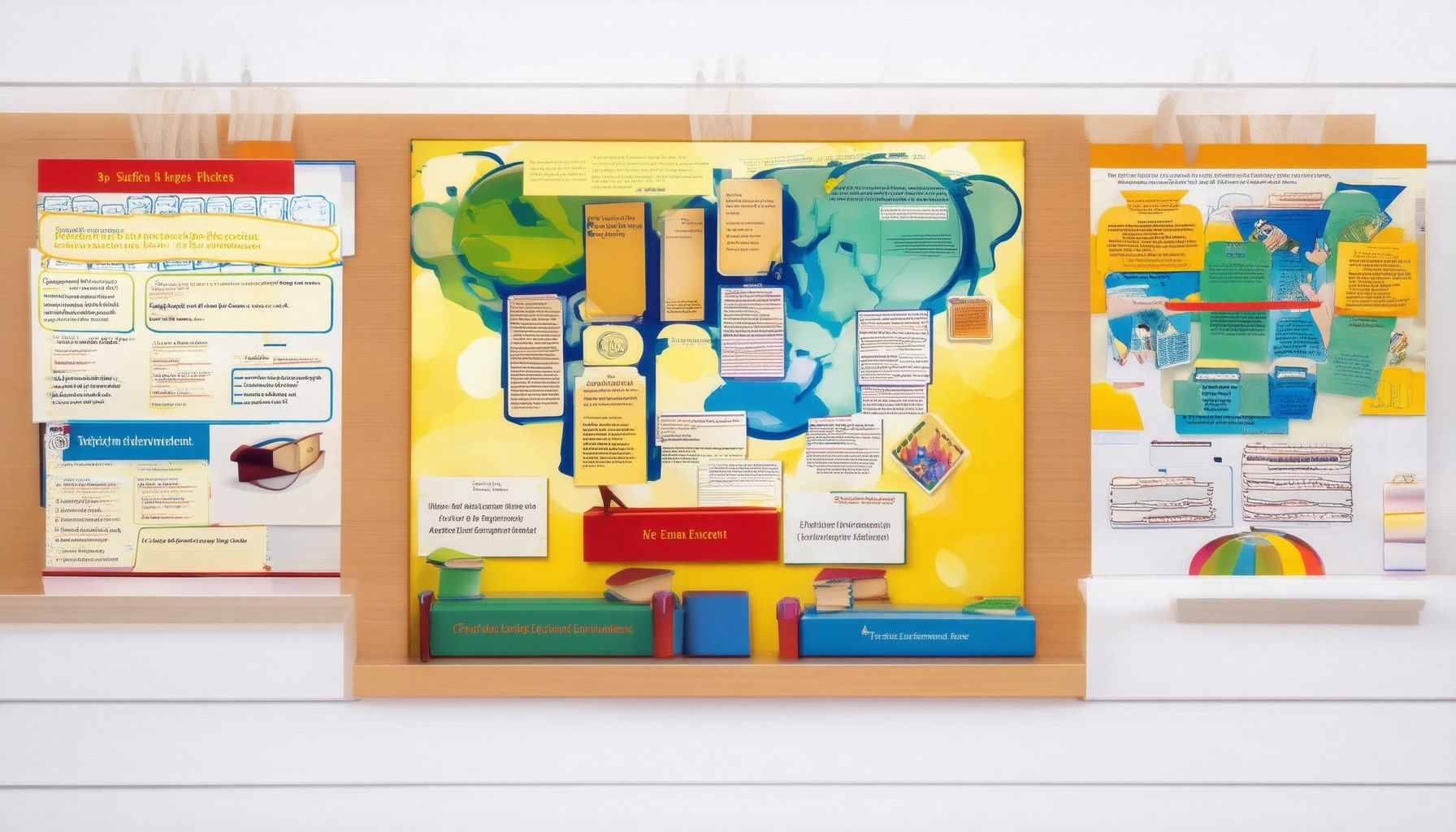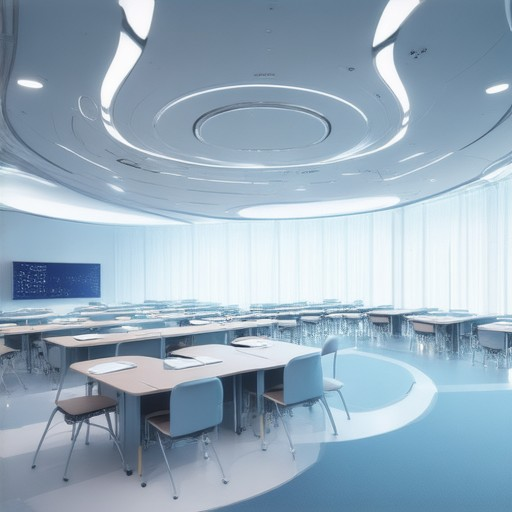Creating an effective learning environment is crucial for fostering success, whether in personal growth, academic achievement, or professional development. An optimal learning environment goes beyond mere physical spaces—it encompasses the interactions, resources, and strategies that inspire curiosity, engagement, and resilience. By thoughtfully designing such environments, educators, parents, and leaders can unlock potential, drive innovation, and empower individuals to thrive. From fostering a sense of belonging to providing access to necessary tools and support, the right learning environment acts as a catalyst for success, equipping learners with the confidence and skills needed to navigate challenges and embrace opportunities. This comprehensive guide delves into the key components, characteristics, and real-world examples that define an effective learning environment, offering actionable insights for those seeking to create meaningful spaces where growth flourishes.
Key Takeaways
- Foster a Safe and Inclusive Environment: Ensure physical and emotional safety, promote diversity, equity, and inclusion, and provide equal learning opportunities.
- Encourage Respectful Communication: Facilitate open dialogue, foster mutual respect, and cultivate a culture of kindness and empathy.
- Design Engaging Learning Activities: Use hands-on, interactive, and real-world applications to motivate and engage students effectively.
- Maintain an Organized Structure: Set clear expectations, enforce consistent policies, and ensure smooth transitions between activities.
- Provide Accessible Resources: Offer equitable access to materials, technology, and support services, including accommodations for diverse needs.
- Build a Collaborative Culture: Encourage teamwork, shared problem-solving, and strengthen connections between students and educators.
- Promote Reflective Growth: Enhance self-reflection, encourage goal setting, provide constructive feedback, and support personal and academic growth.
- Establish Clear Expectations: Define roles, responsibilities, and goals, set realistic deadlines, and deliver consistent feedback.
- Create a Supportive Atmosphere: Celebrate diverse perspectives, practice active listening, and offer peer support and mentorship opportunities.
- Enhance Engagement: Utilize interactive activities, integrate technology, and allow for self-directed learning to maintain interest.
- Cultivate a Growth Mindset: Emphasize effort, perseverance, and learning from mistakes while celebrating progress and acknowledging challenges.
- Ensure Safety and Well-being: Maintain a clean, organized space, promote respect, and address emotional and psychological needs proactively.
- Integrate Collaboration Spaces: Designate areas for teamwork using tools like project management software to enhance collaboration.
- Leverage Technology: Implement digital tools such as interactive whiteboards and online platforms for dynamic learning experiences.
- Deliver Engaging Content: Use multimedia, real-world applications, and hands-on activities to cater to diverse learning styles.
- Implement Assessment and Feedback: Conduct regular assessments and provide constructive feedback to help students monitor progress.
- Sustain an Inclusive Environment: Provide a safe space for expression, risk-taking, and creative problem-solving, empowering students to thrive.
What is the Most Effective Learning Environment?
An effective learning environment is one that fosters growth, engagement, and long-term success. It involves a combination of factors including teacher-student relationships, classroom design, technology integration, and a supportive atmosphere. Below are key elements that contribute to creating an optimal learning environment.
1. Positive Relationships
Building strong connections between teachers and students is crucial. Greeting students warmly, showing interest in their lives, and using positive language can create a welcoming space where students feel safe and motivated to learn.
2. Engaging Classroom Setup
The physical environment plays a significant role in student engagement. A clean, organized, and visually appealing classroom can enhance focus and productivity. Consider incorporating flexible seating arrangements, natural lighting, and access to resources that support diverse learning styles.
3. Technology Integration
Leveraging technology can greatly enhance the learning experience. Providing access to educational tools, online resources, and interactive software can personalize learning and cater to different learning preferences. Platforms like Khan Academy and Coursera offer valuable opportunities for skill development.
4. Supportive Policies
Policies that promote equity and inclusion are essential. Ensuring access to enrichment programs, tutoring services, and mental health resources can help level the playing field and reduce barriers to learning. Schools like Enroll Maven emphasize the importance of creating inclusive environments that support all students.
5. Community Involvement
Engaging families and the broader community can amplify the impact of educational efforts. Regular communication, parent-teacher collaborations, and community events can strengthen the support system around students, promoting a culture of learning both in and out of the classroom.
By thoughtfully designing and maintaining these elements, schools and educators can create environments that inspire curiosity, resilience, and a love for learning. To explore more strategies and resources, visit Enroll Maven .
What Are 5 Components of a Good Early Learning Environment?
Here are five essential components of a conducive early learning environment:
- Age-Appropriate Materials : Provide toys, tools, and resources that cater to the developmental stage of the children. Include items like puzzles, building blocks, art supplies, and reading materials that stimulate curiosity and creativity.
- Safe and Healthy Environment : Ensure the space is clean, hygienic, and free from hazards. Maintain proper organization of toys and materials to prevent accidents. Regularly sanitize surfaces and ensure adequate supervision during activities.
- Parental Involvement : Foster strong partnerships between educators and families. Encourage parents to attend events, volunteer, and communicate regularly with teachers to support their child’s learning journey.
- Hands-On Activities : Incorporate interactive and experiential learning opportunities. Activities like art projects, physical games, and role-playing encourage active participation and skill development.
- Social-Emotional Development : Promote the cultivation of empathy, respect, and problem-solving abilities. Teach children to share, resolve conflicts, and express their emotions effectively.
These components collectively create a nurturing environment that supports cognitive, emotional, and social growth in young learners.
What Are the 5 Characteristics of a Conducive Learning Environment?
- Flexibility: A great learning environment allows individuals to adapt to different learning styles and paces. It supports diverse approaches, whether someone prefers group work, independent study, or hands-on activities.
- Engagement: High levels of engagement are key. This includes interactive elements, opportunities for collaboration, and access to resources that cater to various interests and learning preferences.
- Supportive Atmosphere: Feeling safe, respected, and valued is essential. A positive environment fosters motivation and reduces stress, making it easier to focus on learning goals.
- Collaboration Opportunities: Encouraging teamwork and peer interaction helps students learn from each other and develop social skills. Shared experiences enhance overall learning outcomes.
- Adaptability: The environment should be open to change and willing to accommodate new information or challenges. Flexibility ensures it remains relevant and effective over time.
What is the standard 7 positive learning environment?
The standard 7 positive learning environments refer to a framework developed to ensure effective teaching and learning experiences. These environments are designed to foster growth, collaboration, and academic success. Below is a breakdown of the key components:
1. Safe and Inclusive Environment
- Ensures physical and emotional safety for all students.
- Promotes diversity, equity, and inclusion.
- Provides equal opportunities for learning and participation.
2. Respectful Communication
- Encourages open dialogue and active listening.
- Fosters mutual respect among students and educators.
- Promotes a culture of kindness and empathy.
3. Engaging Learning Activities
- Incorporates hands-on, interactive, and experiential learning.
- Utilizes group work, discussions, and real-world applications.
- Motivates students through meaningful and relevant tasks.
4. Organized and Structured Environment
- Maintains clear expectations and routines.
- Uses consistent policies and procedures.
- Ensures smooth transitions between lessons and activities.
5. Accessible Resources
- Provides equitable access to materials, technology, and support services.
- Offers accommodations for diverse learning needs.
- Ensures availability of necessary tools and resources.
6. Collaborative Culture
- Encourages teamwork and peer learning.
- Creates opportunities for shared problem-solving.
- Strengthens connections between students and educators.
7. Reflective and Growth-Oriented Atmosphere
- Promotes self-reflection and metacognition.
- Encourages students to set personal goals and track progress.
- Provides constructive feedback and opportunities for improvement.
By implementing these seven components, educators can create a dynamic and supportive learning environment that empowers students to thrive academically and socially. For more resources on creating effective learning environments, visit Enroll Maven .
Example of a Positive Learning Environment
A positive learning environment is characterized by structures, supports, and interactions that foster growth, engagement, and well-being. Here’s an example of how such an environment might look:
1. Establish Clear Expectations
- Clearly define roles, responsibilities, and goals for all participants.
- Set realistic deadlines and provide consistent feedback.
- Promote collaboration and encourage open communication.
2. Foster a Supportive Atmosphere
- Create a space where diverse perspectives and backgrounds are celebrated.
- Practice active listening and encourage meaningful discussions.
- Offer opportunities for peer support and mentorship.
3. Encourage Engagement
- Use interactive activities, group work, and hands-on projects to keep students interested.
- Integrate technology to enhance learning experiences.
- Provide opportunities for individualized pacing and self-directed learning.
4. Cultivate a Growth Mindset
- Emphasize effort, perseverance, and the importance of learning from mistakes.
- Share stories of failure turned success to inspire resilience.
- Celebrate progress and acknowledge challenges faced.
5. Ensure Safety and Well-being
- Maintain a clean, organized, and comfortable physical space.
- Promote respect, empathy, and understanding among all individuals.
- Address emotional and psychological needs proactively.
By implementing these elements, a positive learning environment can unlock potential, encourage innovation, and create lasting memories of growth and achievement.
Standard 3 Learning Environment
The standard 3 learning environment refers to the creation of educational settings that promote effective learning outcomes. It emphasizes the importance of fostering environments that support both individual and collaborative learning experiences.
Key Components of the Standard 3 Learning Environment
- Collaboration Spaces: Designated areas where students can work together on shared goals, utilizing tools like project management software or group projects to enhance teamwork and peer learning.
- Technology Integration: Incorporation of digital tools such as interactive whiteboards, online learning platforms, and virtual classrooms to facilitate accessible and dynamic learning experiences.
- Engaging Content: Utilization of multimedia resources, real-world applications, and hands-on activities to cater to diverse learning styles and maintain student interest.
- Assessment and Feedback: Implementation of regular assessments and constructive feedback mechanisms to help students monitor their progress and identify areas for improvement.
- Inclusive Environment: Creation of a safe and welcoming space where students feel empowered to express themselves, take risks, and engage in creative problem-solving.
This holistic approach ensures that learning environments are both effective and enjoyable, promoting the development of critical thinking, collaboration, and resilience in students.









0 Comments